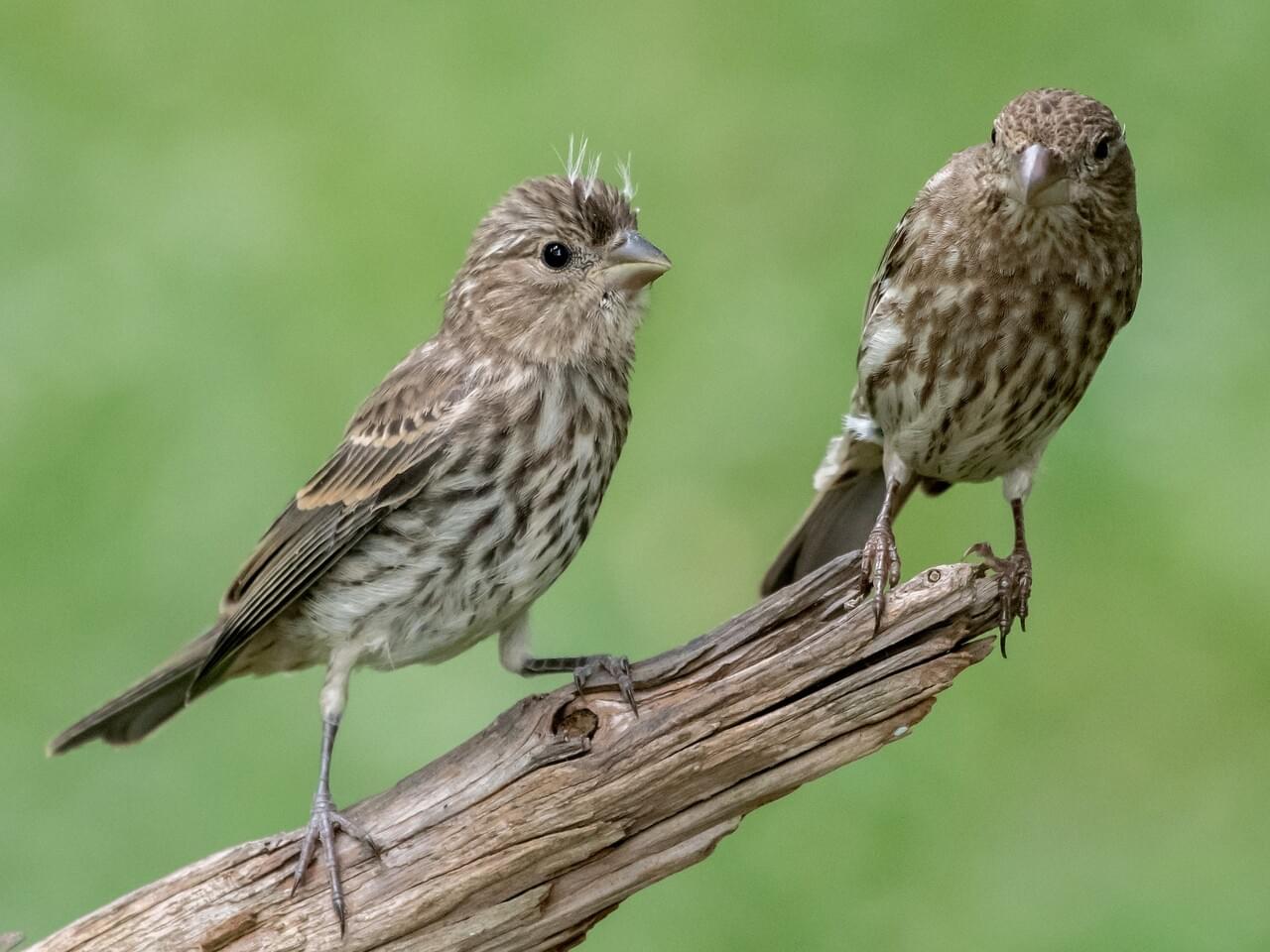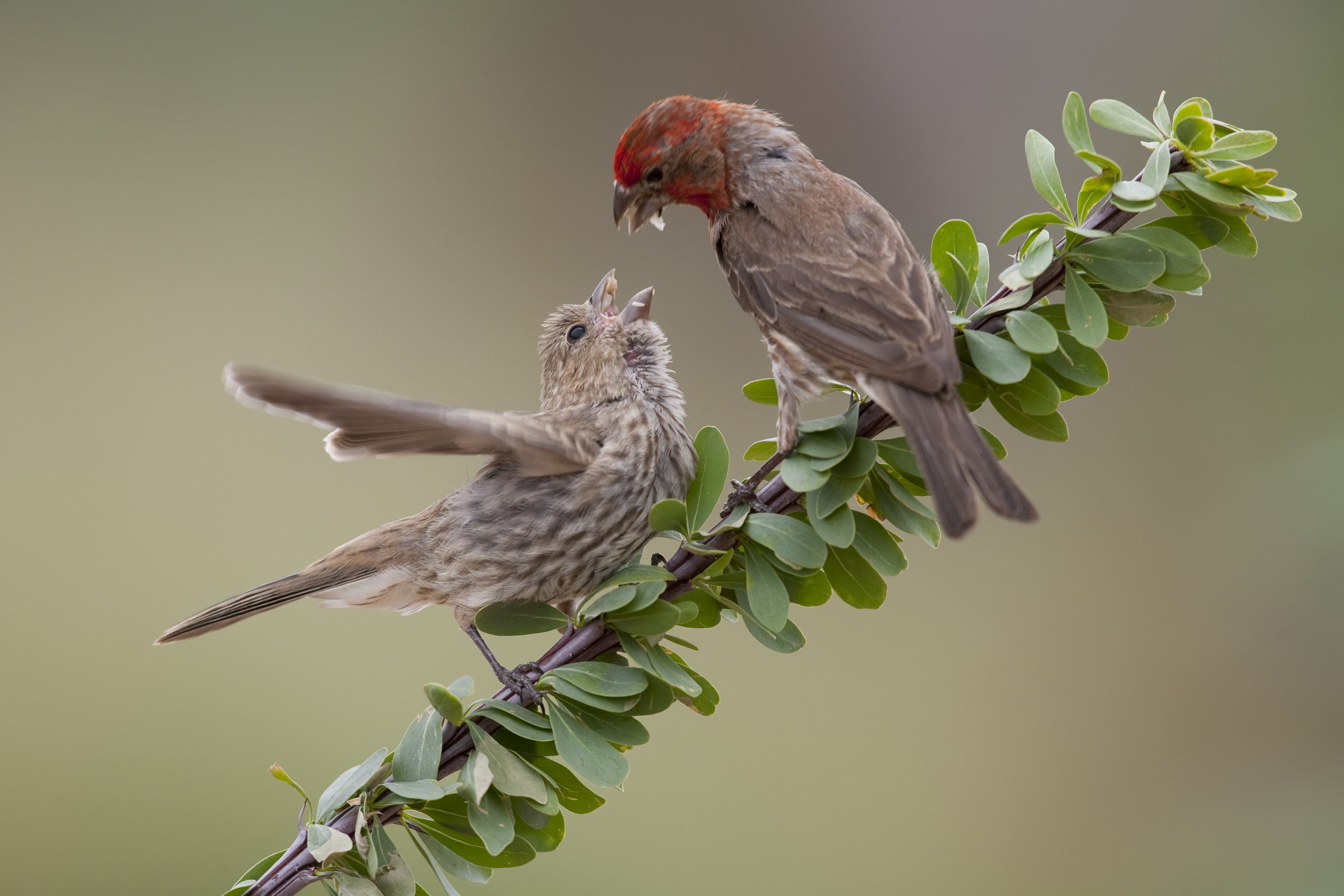Table Of Content

They sometimes sing alone, but usually with a mate and during courtship feeding. House Finches are monogamous, and pairs tend to form while the birds are in their winter flocks. They choose a wide variety of nesting sites, and will nest in man-made objects such as window ledges and holes in buildings. Ivy growing on buildings or trees creates many nesting sites.
Supplemental Food Sources
Predators such as domestic cats, birds of prey, and snakes pose a significant threat to house finches. These predators are always on the lookout for an opportunity to feed on eggs, nestlings, or even adult birds. House finches have developed various strategies to minimize predation, such as choosing well-hidden nesting sites and practicing vigilance when approaching their nests. Flocks of House Finches are common at bird feeders during the non-breeding season. Some flocks may stay together through the breeding season as well, and birds will use bird feeders year round. They often forage on the ground, but also perch on weeds, shrubs, or trees.
How do house finches build their nests?
While both the House Finch and the Red-headed Sparrow belong to the same order of birds, Passeriformes, they are classified into different families. The House Finch is a member of the Fringillidae family, which includes finches and other similar species. On the other hand, the Red-headed Sparrow belongs to the Emberizidae family, which includes sparrows and buntings. House Finches are widely distributed across North America, making them one of the most common and recognizable birds in the region. Their geographic range spans from the southern parts of Canada to the northern parts of Mexico.
How can I tell the difference between a finch and a sparrow?
Red on head is largely on the eyebrow and throat, with brownish cheeks. This bipartisan bill is designed to ensure federal contracting dollars intended for women-owned small businesses (WOSBs) are awarded to those firms that meet the U.S. Small Business Administration’s (SBA) small business size standards.
Brown-Headed Cowbird Starts Life in a House Finch Nest in Newburyport - Wicked Local
Brown-Headed Cowbird Starts Life in a House Finch Nest in Newburyport.
Posted: Tue, 24 May 2022 07:00:00 GMT [source]
Diet Differences Between House Finches and Sparrows
The current species living in central Chiapas are thought to be the descendants of the caged birds of the 1940s. Here is a quick and simple table that will help you compare and quickly grasp the characteristics of a male and female House Finch. Consequently, the colors can range from dull yellow to vivid orange to deep, crimson red. The shape of the tails and wing bars are identical as well.
If you haven’t seen one recently, chances are you can find one at the next bird feeder you come across. House Finches, particularly males, can look very different from one to another. This is largely due to differences in their diet rather than regional differences. Female/immature Purple Finches have crisp streaks on the breast and flanks unlike female/immature House Finches, which have blurry streaks on the breast and flanks. They also have a white eyebrow and mustache stripe that female/immature House Finches lack. Often mistaken for the Purple Finch, however not quite as richly colored.
They perform what’s known as a butterfly display, in which the males take to the air and then glide back to their perches while singing a loud buzzing song. Before choosing a mate, female house finches watch a show, sometimes performed by several males at the same time. One of the most striking features of house finches is their plumage and coloration. Both males and females exhibit vibrant colors, although the males tend to be more brightly colored. The male house finch boasts a beautiful combination of red, brown, and gray feathers. The intensity of the red hue can vary based on the bird’s , with a richer red coloration often indicating a healthier and more nutritious .
Where do house finches nest at night?
They will feed their female partners during breeding and incubation as well. The males tend to perform different types of courtship displays. One of them includes the males touching the bills with the females. They might occasionally feed them fly larvae for an early protein boost, but that’s all there is to it. Their most preferred food as a youngling is dandelion seeds.

They might attack other bird species’ nests and forcefully take over the nesting site for themselves. On the other hand, female House Finches typically have unpatterned, gray-brown heads, and blurry gray-brown streaking down their chest and belly. While some sparrows are relatively brownish allover, other sparrow species are more varied in color with bold markings in black, chestnut brown, white, and gray colors. Within a flock, house finches display social hierarchies, where dominant individuals have priority access to food and other resources. This hierarchy is often established through aggressive displays and interactions.
Songs that do not contain a buzz are sung throughout the year, while buzz songs are mainly heard during the breeding season. Female and male house finches give both types of calls, but male calls are often more varied. They also have longer wings and tails and shorter bills compared to females. Territory is another resource that house finches compete for.

It has become very common in suburban areas and is easily attracted in large numbers to seed feeders. Both the male and female house finch participate in the nest-site selection. They often search together but will also conduct searches separately without getting too far apart.
Outdoors column: Timing's right for redbud blooms and purple finches - Chicago Tribune
Outdoors column: Timing's right for redbud blooms and purple finches.
Posted: Wed, 26 Apr 2023 07:00:00 GMT [source]
The vast majority of the House Finch's diet is vegetable matter--seeds, buds, berries, and nectar. They eat a few small insects, especially aphids, but are primarily seed- and fruit-eaters at all times of the year. House Finches are small-bodied finches with fairly large beaks and somewhat long, flat heads. The wings are short, making the tail seem long by comparison. Many finches have distinctly notched tails, but the House Finch has a relatively shallow notch in its tail.
Adults have a long, square-tipped brown tail and are a brown or dull-brown color across the back with some shading into deep gray on the wing feathers. Breast and belly feathers may be streaked; the flanks usually are. In most cases, adult males' heads, necks and shoulders are reddish.[3][4] This color sometimes extends to the belly and down the back, between the wings. Adult females have brown upperparts and streaked underparts.
Usually, they nest in different kinds of cavities that are convenient for them, such as openings in buildings, hanging plants, and other cup-shaped outdoor decorations. They prefer singing with their mating partner, especially during the courtship feeding. The primary sources of food for this species include grains, buds, foliage, seeds, and berries. It exhibits a strong preference for various types of weed seeds, such as nettle and dandelion.
The female then joins the male in bringing food to the young. The young leave the nest after 12 to 15 days and may be fed by the male for about two more weeks, while the female starts a second clutch. Providing safe and secure nesting boxes in gardens and parks can also help protect the birds from predators. By taking these preventive measures, we can reduce predation risks and enhance the chances of successful breeding and survival for house finches.
It not only helps them blend into their surroundings but also plays a vital role in attracting mates. The vibrant red feathers of the male act as a visual signal to potential partners, indicating their fitness and genetic superiority. This display of colorful plumage is an essential part of courtship rituals among house finches. Baby house finches generally leave the nest days after hatching. However, the male takes over most of this responsibility in the days before the chicks fledge.

No comments:
Post a Comment